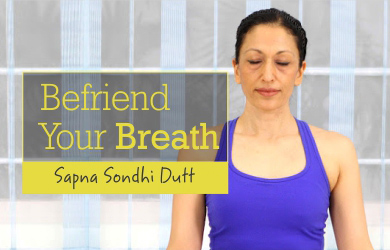
Imagine, never landing up in an altercation. Imagine yourself always walking and sleeping with a calm, radiant face. Imagine everything around you running and working like a well-oiled machine. Does it seem to you like an inaccessible Utopian place to be? Well, it’s certainly Utopian but definitely not inaccessible.
“When you own your breath, nobody can steal your peace.”
-Anonymous
As vague as the words sound, the meaning of the quote above is true to its core. If, at this moment, you are wondering, “How is it possible for me to control my breathing?”, then you have asked yourself the right question. After all, breathing is a natural process, controlled by the brain, which we, humans, have been unconsciously performing.
Did you know that your breathing pattern keeps changing throughout the day?
Sometimes it is fast and shallow, while at other times, it is deep and slow. Sometimes you exhale gradually and sometimes you gasp for air.
You must have noticed, as the day progresses, you are burdened with responsibilities and your breath becomes heavy. This shows a clear connection between breathing rate and state of mind, which also indicates that if you can somehow manage to alter your breathing pattern, you can change your state of mind too.
Much of this occurs due to the association between the parasympathetic and the sympathetic nervous system. Both systems are affiliates of the autonomic nervous system that mainly functions below the level of consciousness.
When you are upset, your breathing tends to become fast paced and shallow. Even at the end of the day, when you are finally ready to relax with a sigh of relief, a certain tension within your body disrupts the process of relaxation before sleep.
All this can be overcome with what is called, Conscious Breathing. Some of you may be hearing this term today for the first time while others might have heard it without really dwelling on it. Let me explain it to you in simple words and also how you can carry it out.
Conscious breathing is a technique used for relaxation in which practitioners shift their focus of attention from the stream of mental chaos to the natural rhythms of their breath.
Being able to observe your breath properly can dispel anxiety and help you reach a highly focused state of mind.
Your breath is something that is always with you. You might go on for days without eating food or even drinking water, but without breathing, even for a few minutes, you would not survive.This is why you need to be acutely aware of your breathing and make your breath your closest friend. Here are the four steps to doing that:
- Begin by observing the way you breathe throughout the day: Observe and note the situations when your breathing changes. When does your breathing get rapid and untidy? When does it slow down? Do you feel anxious and breathless at times? Correlate the breathing with the mental state you are in.
- Take notes: Whenever you can, take notes of your breathing pattern so that you have a tangible record.
- Start taking action: In a tensed or stressful condition, when your breathing seems rapid, consciously, try to bring it back to an even, relaxed rhythm with slow and smooth inhales and exhales.
- Notice your face: Observe how your face relaxes when you breathe with ease. You will feel your facial muscles losing all the tension, accompanied by a peaceful feeling settling into your organs.
Breathing correctly is nature’s way of working our lungs. By carrying out this natural process correctly, you can inhale life-giving oxygen and exhale carbon dioxide and all other harmful gases from the lowest and broadest parts of your lungs. Now, how to do it?
You would have to breathe a little deeper and primarily use your abdomen, rather than the chest while doing so. Let me guide you on how this can be done with ease and comfort:
- Expand Your Abdomen, as you slowly inhale air through your nostrils, and continue to work your way up towards the mid-body and chest, expanding them too.
- Hold Your Breath for a comfortable period of time, could be anywhere from two seconds to six seconds.
- Squeeze Your Abdomen Inwards Continuously as you exhale, relaxing the chest and mid-body first.
- Hold for a count of four and repeat the process again.